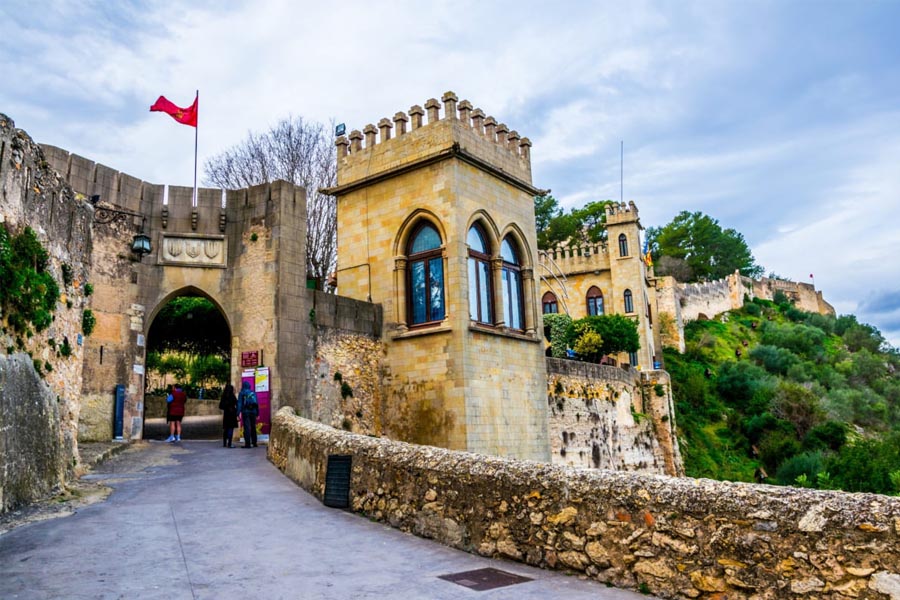In Travel Habitat we recommend Xàtiva as a one-day trip if you are coming on holidays to Valencia: it used to be a Muslim administrative district, it hosted the first paper mill in Europe in the 11th century, later on it was conquered by Jaume I during the Kingdom of Valencia, it was the birthplace of the Borgia family -the birth of the popes Calixto III and Alexander VI in the 14th and 15th centuries- and later on it was burnt down by Felipe V de Borbón for supporting the Austrias.
From this rich past, countless monuments have remained, some of which can be seen in a one-day trip from Valencia by train (30 minutes) or by car (less than 1 hour).
Xàtiva Castle
What is essential to visit in a one-day trip to Xàtiva? Its castle: in less than half a day we can enjoy its most emblematic walls and halls that date back to the Iberian and Roman times, as well as its views from the top of the Vernissa hill.
Two tips: enjoy the beautiful gardens of Ibn Hazim, in the Xàtiva Castle, and choose either to climb on foot or go up on a tourist train.
Opening hours of the Xàtiva Castle: from Tuesday to Sunday from 10 am to 7 pm in summer, until 6 pm in winter.

Other monuments to visit in a one-day trip to Xàtiva
- The old town: narrow streets with squares, churches, palaces and old buildings with lots of charm.
- Colegiata de Santa María, next to the Xàtiva Castle, which was built on an old mosque and combines Gothic, Classic and Baroque.
- Other spots: Plaza de la Trinitat, Hospital Reial (its tiling), Real Monasterio de Santa Clara (Mudejar gothic architecture) and Museo Almodín, a must-visit to understand the Muslim times of Xàtiva.

Routes to discover Xàtiva during your one-day trip
- Ruta de las mil fuentes (literally, Route of the 1000 fountains) will take you through some of the most emblematic fountains. Its name is taken upon the over 900 fountains that used to exist in Xàtiva in the 17th century.

- Cova Negra is probably the most important archaeological site in Xàtiva. Further information
- Ruta de los Borgia will allow you to learn about one of the most powerful families in Europe in the Renaissance, from which appeared not only two Popes but also several artistic patrons.

